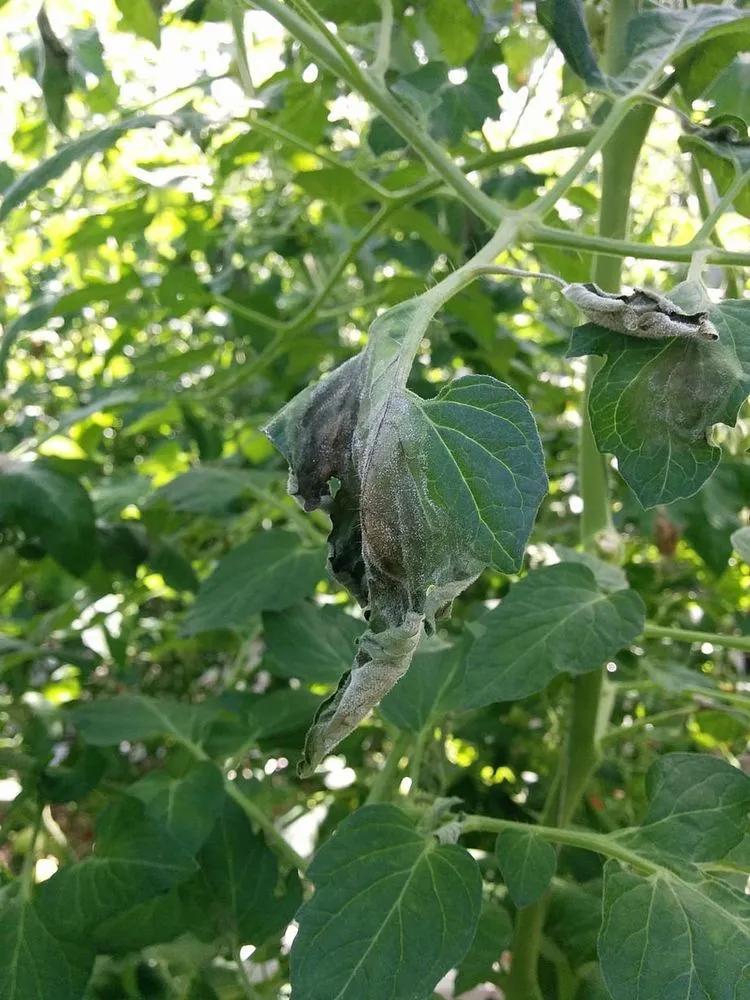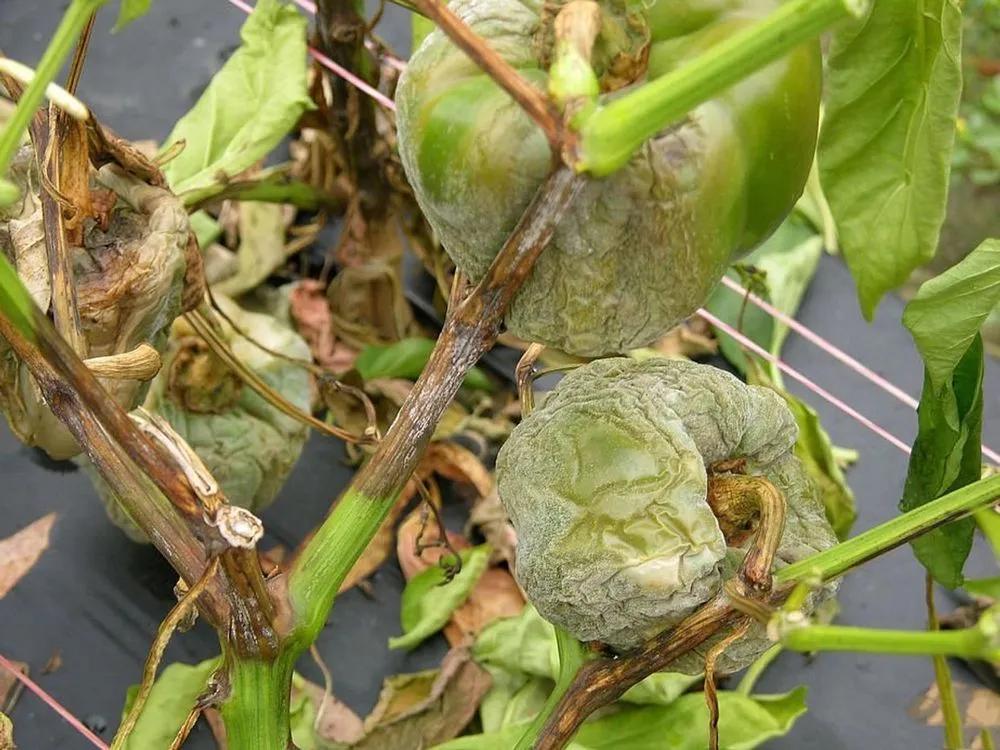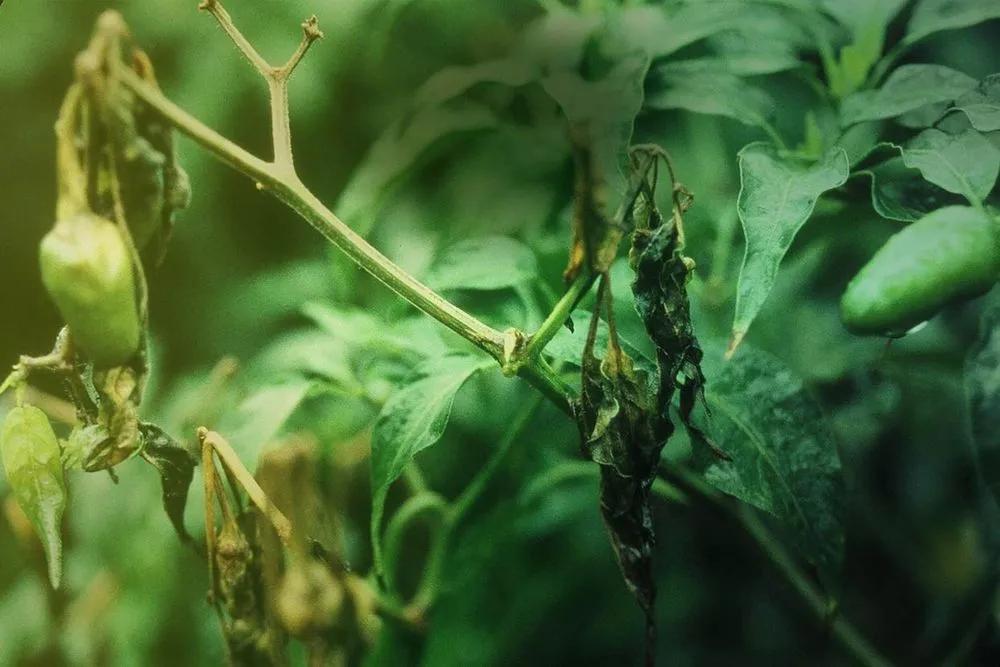Phytophthora blight is caused by the pathogen Phytophthora capsici, most common in cucurbits and peppers. Symptoms include wilting, root and crown rot, and water-soaked rot on fruits.
Phytophthora Blight in Plants



Signs of damage
General symptoms on the solanaceous crops and cucurbits include seed rot and seedling blight which discolors the roots and causes seedlings to topple over. Preemergence and postemergence damping-off are also possible symptoms that may occur.
How to prevent
Avoid overhead watering that can produce surface runoff, and consider slow drip irrigation instead. Hardy Phytophthora blight pathogens will survive in both hot summer and cold winter compost piles. Remove infected plants immediately, bag and dispose of infected debris, and always keep your garden clean.
Heal
Crop rotation may reduce the number of pathogens in the soil and, "a minimum of a 3 years crop rotation which alternates with non-host species is recommended to avoid build-up of P. capsici spores." Crops should also avoid conditions that would be conducive to the pathogen by using well drained soils and raised beds. As stated above, "Excess moisture is the single most important component to the initial infection and subsequent spreading of Phytophthora capsici. Overall, a study by K.H. Lamour and M.K. Hausbeck found that "crop rotation and mefenoxam are not likely to provide economic control". Mefenoxem is the active enantiomer contained in the racemic fungicide metalaxyl used to defend against Phytophthora capsici. Sexual recombination provides the genetic diversity to promote resistance towards fungicides in P. capsici. The failure of crop rotation as a means to control P. capsici may also be due to weeds playing the role of an alternative host in the absence of common hosts. According to a study done by the University of Florida, "In Florida, and perhaps elsewhere, weeds may contribute to pathogen survival in the absence of a host crop or when propagules may not readily survive in soil or plant debris." To avoid fruit rot of vegetable crops in the Cucurbitaceae, trellising cucurbit fruits and other ways to keep the fruit off the ground is a way to control secondary inoculants (zoospores) from physically being splashed from the soil onto the fruit. Control of Phytophthora capsici is easier in drier climates with less rainfall such as California. In these areas, it is important to practice placing drip irrigation emitters away from the stems of pepper plants in order to reduce the incidence of crown rot in peppers.
Go Premium to continue reading
Also you’ll get unlimited access to disease identification and all the other beneficial features
More problems
